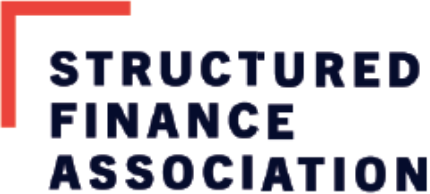SFA Research: Triple-A CLOs Weather COVID-Induced Credit Storm
Written by: Elen Callahan, Head of Research, Structured Finance Association
Leading into 2020, there was much discussion about the leveraged loan market and its potential impact on the financial system. Partially fueling those with concerns was the impact that CLOs had on the market’s rapid growth, which grew from $500 billion in 2010 to $1.2 trillion in 2019. Narratives were drawn comparing the role that collateralized debt obligations (CDOs) played in amplifying borrower defaults in the subprime mortgage crisis. Since leveraged loans are made to non-investment grade, highly leveraged corporate borrowers, CLOs were thought to be particularly vulnerable to an anticipated contraction in the corporate credit cycle. Market watchers pointed to signs of rising credit risk in elevated levels of corporate leverage, deteriorating loan quality and falling underwriting standards. Particularly concerning to some observers was the proliferation of “cov-lite loans,” which have weak or no financial maintenance covenants to protect the lender and grew from representing roughly 40% of loans held by CLOs to 85% in over five years.
Last week the U.S. Government Accountability Office (GAO) reported that the highest-rated senior tranches of collateralized loan obligations (CLOs[1]) remained “largely resilient” following the initial COVID-19 shock even as the leveraged loans, the collateral behind CLOs, “suffered record downgrades and increased defaults.” The December report examined assessments by regulators, the Financial Stability Oversight Council and others of the potential risks to financial stability stemming from leveraged lending. The GAO concluded that the CLO market does not pose systemic risk. Stress-tested by the unprecedented disruption wrought by COVID-19, the GAO asserts that present-day CLOs, with their straight-forward, transparent structures and robust investor protections, “appear to pose less of a risk to financial stability than did similar securities during the 2007-2009 financial crisis.”
The GAO cautioned that “it is too early to conclude how CLOs will fare once the full effects of the COVID-19 shock on the leveraged lending markets unfold.” Yet the GAO reiterated that they do not expect triple-A tranches of CLOs to suffer loss to principal unless economic conditions worsen “severely,” an unlikely scenario given recent medical developments and a Federal Reserve that has made it clear how far it will go to support market stability. Indeed, the SEC posits in an October report that on a static basis, senior triple-A CLO tranches would not lose a single dollar of principal, even if default rates climbed to 35% and loan recoveries were to fall to 0%. To put that into perspective, defaulted loans currently account for 1.2% of CLO holdings and the historical average recovery rate for leveraged loan is 70%.
[1] In this report, we only discuss CLOs backed by broadly syndicated leveraged loans. Other CLO types are middle market and commercial real estate CLOs.
Below we take a look how the pandemic affected the CLO market.
Following the coronavirus outbreak, and the subsequent efforts to limit contagion, widespread business closures led to immediate and dramatic loss of revenue for consumer-facing industries. Confronted with widespread economic uncertainty, financial markets experienced record declines in the prices of risky assets, widespread illiquidity, and elevated volatility. Similarly, leveraged loan issuance came to a halt as financing became difficult for lower rated companies. Loan prices plummeted with more than half of the leveraged loan market trading at distressed levels. Loans that were trading at 98 in February were trading below 80 in March. The severe economic disruption prompted unprecedented levels of fiscal and monetary policy responses, including the launch of emergency lending facilities that ultimately provided up to $2.3 trillion in loans to stabilize households, communities and businesses of all sizes. These facilities were liquidity lifelines that helped many leveraged businesses avert default and withstand the early days of the COVID shock. The presence of these lending facilities and the Fed’s “whatever it takes” commitment to market stabilization improved financing conditions. Leveraged loan issuance returned gradually and loan prices stabilized.
The CLO market followed suit. In the primary market, new issue activity slowed in March and April but gradually recovered once broader markets stabilized. Nonetheless, 2020 supply is expected to fall 30% below 2019’s. Amidst market uncertainty and a move away from risk, the cost to issue CLOs increased by 1.5 times between March and May. As markets stabilized, and demand recovered, pricing gradually improved. Today new CLO tranches are pricing at or near their pre-pandemic levels. A similar trend was observed in CLO prices in the secondary market. Bid-ask spreads widened by two- or three-times January levels reflecting the market’s wariness of products with a component of credit risk.
While the injection of fiscal and monetary support restarted the market, decimated corporate earnings and an uncertain recovery increased the risk of default. Rating agencies took action. Between March and May, S&P downgraded 432 leveraged loans, which exceeded the number of downgrades for all of 2019. S&P’s leveraged loan default rate climbed steeply from 2.9% in March. This metric is expected to end the year between 4.5- 5%, and peak over 6% in 2021.
CLO credit mirrored the deterioration in the underlying loan quality. With the rise in leverage loan defaults, the number of defaulted loans held by CLOs also increased. According to Moody’s, the median holding of defaulted loans was 1.2% in September, up from near 0% in early 2019. The number of triple-C rated loans held by CLOs grew from 4.11% in January, reached a peak of 11.41% in July and is expected to end the year around 9%, according to S&P Global. CLOs are secured by collateral the face value of which is greater than the amount of bonds issued. This overcollateralization (OC) provides each tranche with some level of buffer against losses. The amount of protection (OC level) depends on the seniority of the tranche. As loan quality deteriorates, the face value of the pool may fall, leaving the CLO tranches more exposed to defaults. At the peak of the pandemic, 19% of Moody’s-rated CLOs were failing at least one tranche-level overcollateralization (OC) test, designed to help maintain the principal value of the CLO bonds.
CLO downgrades followed for lower rated bonds while Triple-A remain stable. Since March 1, 11% of the CLOs universe has been downgraded with most of the negative rating action happening on the tranches rated double-B and below. Notably, having come through one of the most severe credit storms in financial history, no rating actions have been taken on any triple-A tranche. With their robust levels of subordination and overcollateralization, nor are they expected to be subject to negative rating actions in 2021, particularly as the economy continues to recover.
While the credit profile of triple-A CLOs emerged intact, in line with the entire financial markets triple-A CLOs were not immune to the unprecedented financial shock and liquidity void that COVID and the lockdowns generated in March. Bid-ask spreads on triple-A CLOs, which comprise about 60% of a CLO structure and therefore the most liquid of the CLO tranches, widened by 250-300 bp between February and March, as demand for credit products plummeted regardless of rating. General demand for CLOs recovered as markets stabilized, although the speed of recovery varied. Spreads on triple-A CLOs recovered very quickly from March’s wides and are now less than 10 bp away from the January levels. Spreads on triple-B CLOs, on the other hand, doubled between February and March and languished at historical wides for a few months before moving meaningfully towards recovery territory. Spreads on triple-B CLOs are now 45 bp away from its January level.
As many aspects of the CLO market have proven to be more conservatively managed, including through tighter ratings criteria, since the 2008 financial crisis, concerns over CLOs’ impact on the systemic health of the financial system have been significantly allayed. That said, we remain laser focused on the health of underlying businesses as the pandemic and its effects continue to be felt across the economy, especially sectors hardest hit such as travel, hospitality, food services and entertainment. Congress passing the second COVID relief package today is another important step toward recovery.
For a deeper discussion on CLOs, please see SFA’s white paper here. SFA will continue to monitor the leveraged loan markets in 2021 and its impact on CLOs.


